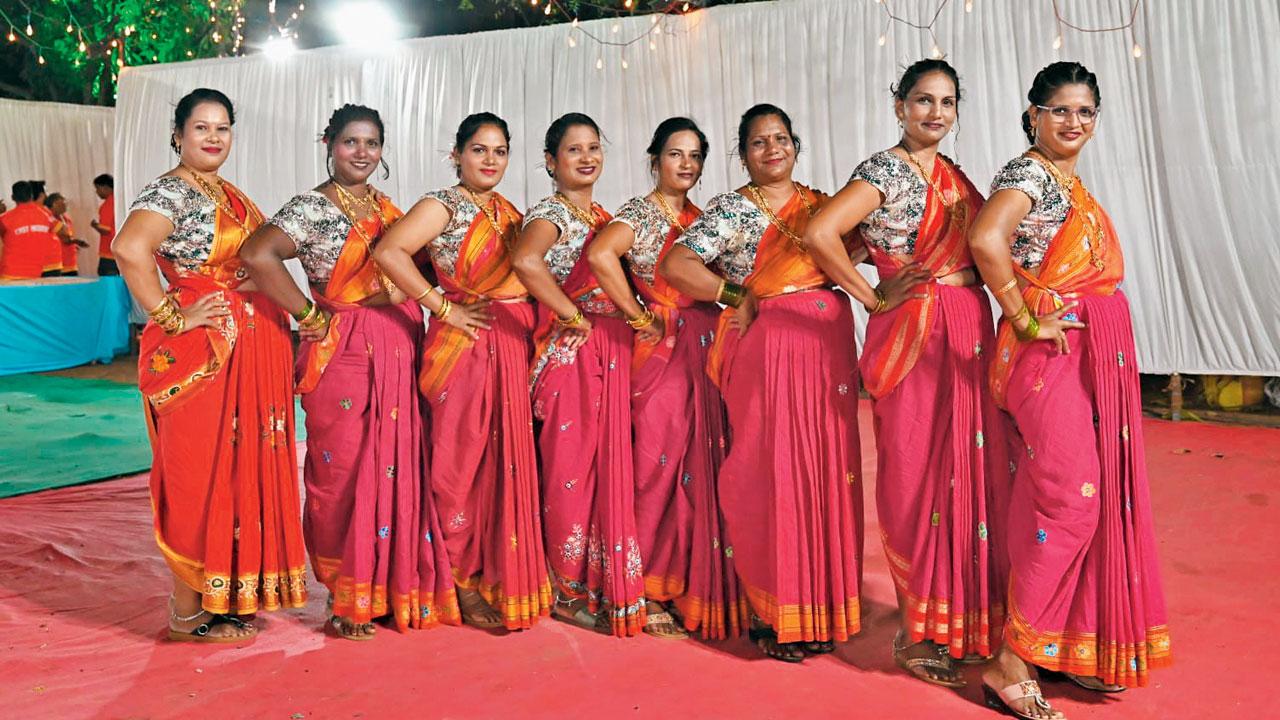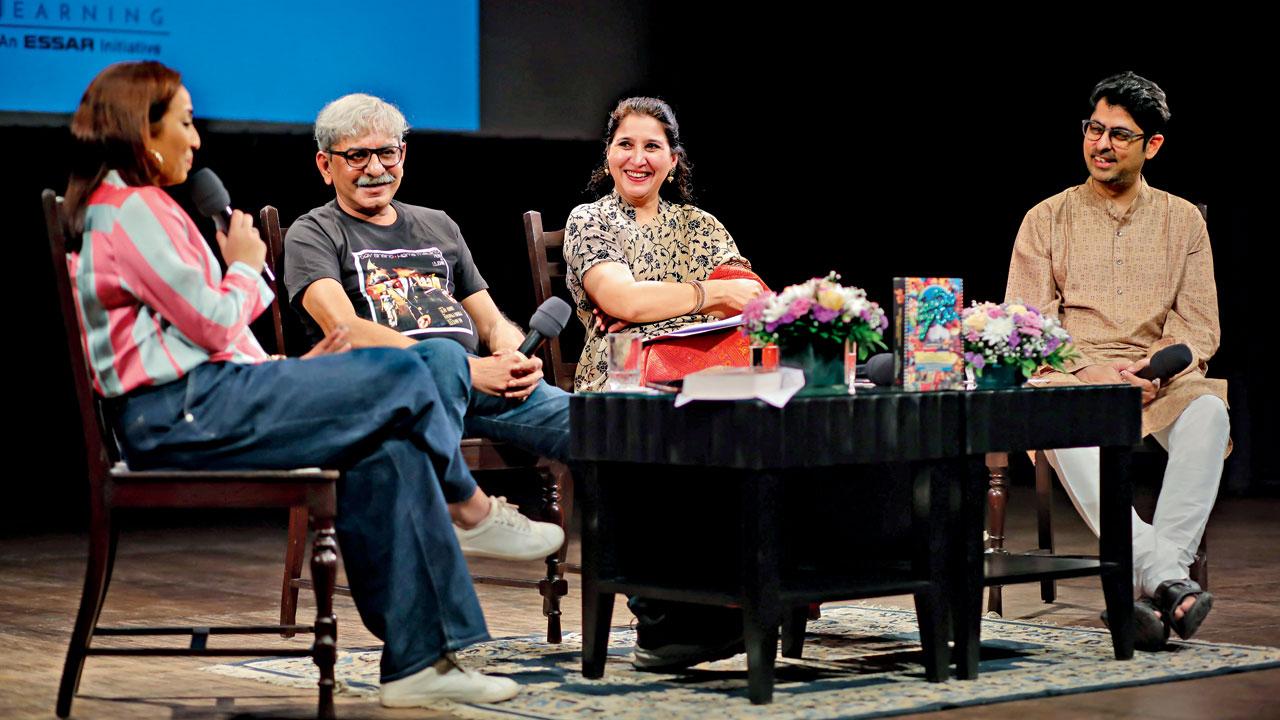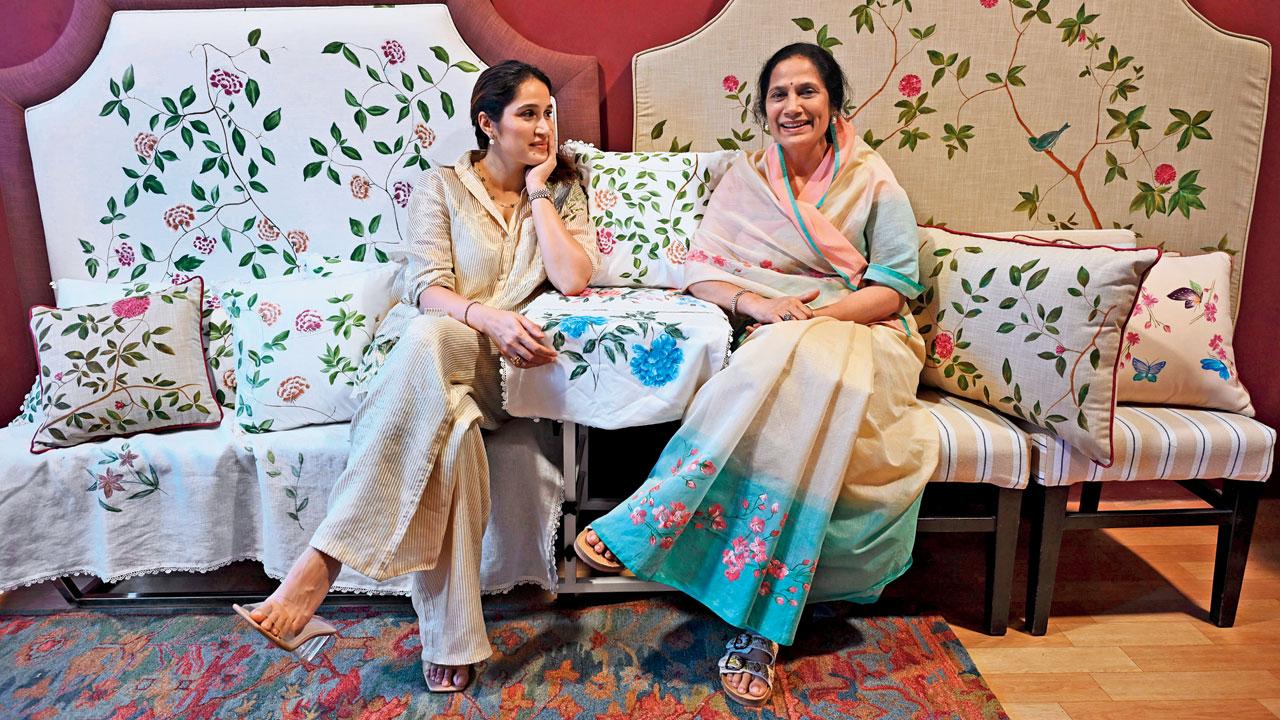The city - sliced, diced and served with a dash of sauce

Pic/Atul Kamble
Hawa main udta jaye
ADVERTISEMENT
Students at Carter Road play with their raincoats to make the most of the monsoon.
Lugras as Sunday best

Today, churches across Mumbai, Vasai, Thane and Raigad will become a sea of lugras and surkhas, as the East Indian community steps out in traditional attire to mark Bhumiputra Aitwar or Indigenous People’s Sunday. This is another push from the community to be recognised as one of the original residents of Mumbai, an issue they have long petitioned the government and Church over. “We have requested the Maharashtra government to recognise this day as well. We also plan to send a communiqué to the Archdiocese to officially recognise Indigenous People’s Sunday,” said Gleason Barretto, global ambassador of Mobai Gaothan Panchayat, an organisation that represents the community. Today, as they show up in their traditional finery, it is as much an assertion of their cultural identity as it is a show of strength by the community.
Chappell-like start to Gambhir’s losing stint

Gautam Gambhir and Ajit Agarkar inspect the pitch in Colombo on July 31. Pic/AFP
These columns had pointed out how, like Greg Chappell in 2005, present head coach Gautam Gambhir kicked off his stint with the Indian cricket team in Sri Lanka. It turns out that like Rahul Dravid’s team way back then in the Indian Oil Cup triangular, Team India did not dish out a praiseworthy show, losing an ODI bilateral series to Sri Lanka for the first time since 1997.

With due credit to the Sri Lankans, whose spinners had India’s batters in knots, it’s a result that should send the Rohit Sharma-led ODI team back to the drawing board. With so many bitter-sweet moments occupying the mind space of Indian sports aficionados during the Olympics, it appears the Indian cricket team has escaped a mini storm. Anyway, hope Gambhir’s stint doesn’t end like Chappell’s.
That ’70s Show

(From left) Rohini Ramanathan with Sriram Raghavan, Nirupama Kotru and Varun Grover
Sholay’s blue denims and Vidya Sinha’s easy-wash georgette and Swiss voile sarees in Basu Chatterjee’s films, the smuggler-villain as a connoisseur of the good life, and the contributions of lyricist Yogesh, were only some of the delightful titbits that came up during an absorbing discussion held at the Royal Opera House on August 7. Revolving around the new anthology The Swinging 70s: Stars, Style and Substance in Hindi cinema, edited by senior civil servant Nirupama Kotru and editor and critic Shantanu Ray Chaudhari, the evening saw media personality Rohini Ramnathan engage in a wide-ranging conversation with Kotru, filmmaker Sriram Raghavan and screenwriter and lyricist Varun Grover, both contributors to the volume, on the fashion, music, stars and tropes of this iconic period. “It’s wonderful to see the way literature can make a time period come alive. This was a lovely way to spend an evening in Mumbai, a city whose economy and identity has been shaped by Hindi cinema. Seeing our community laughing, grooving and connecting with our panelists as they unpacked the turmoil of 1970s India through film was very special,” said Inakshi Sobti, CEO of Asia Society India Centre, one of the organisations behind Wednesday’s event.
Back to our roots

Sagarika Ghatge and her mother Urmila. PIC/KIRTI SURVE PARADE
Actress Sagarika Ghatge and her mother, Urmila, bring their shared passion for art and tradition to life with Akutee, their homegrown artisanal brand that started during the lockdown. At an old commercial building in Worli, the mother-daughter duo took this diarist through their latest collection, Nostalgia, which transported us to an era when hand-painted garments were the epitome of luxury. The collection, with elegant drapes, salwar suits, co-ord sets and jackets adorned with delicate embroidery, celebrates the meticulous process of turning art into wearable elegance.
Sagarika tells us how Nostalgia allows the urban audience to enrobe themselves in centuries of heritage. “Inspired by the natural world’s intricate beauty, a theme was drawn from my mother’s trunk full of paintings, which she created when I was young. Our garden at our Kolhapur home served as a muse, with peacocks, birds, and butterflies symbolising freedom and elegance.”
Each piece in the collection is adorned with hand-painted motifs, a craft Urmila has carefully passed down to select artisans who have been trained under her expert guidance to masterfully capture the iridescent hues of peacock feathers, the delicate veins of butterfly wings, and the vivid shades of various bird species. Urmila reflects on the collaborative nature of this artistic journey, saying, “While teaching the artisans, I learned so much as well. Our country is rich with beautiful art forms, and with Akutee, and with this venture, we’ve only begun to explore them.”
The designs highlight the timeless beauty of handwoven fabrics. “They are crafted to be worn and cherished for generations, embodying the essence of slow fashion. This commitment to sustainability in fashion will inspire the audience,” said Sagarika.
Rani Baug’s Kew Gardens link

Amba Sayal-Bennett
I was looking up botanical gardens in the city, and that’s probably what led me to discovering Rani Baug and its link to Kew Gardens,” recalls London-based British-Indian artist Amba Sayal-Bennett, who’s showcasing her first solo exhibition in India at TARQ, titled Dispersive Acts.
It focuses on the city’s former Victoria Gardens, established in the 1860s as a colonial project to import plants from Asia, Africa and the Americas for cataloguing. Comprising a series of sculptures and drawings, her work traces the movement of botanical matter across different continents, such as rubber seeds being smuggled from South America to the Royal Botanic Gardens in Kew England, and then deployed to different colonies for cultivation. “Initially the seeds that came here didn’t grow unlike the rest of South East Asia,” she points out.
Colonial botany involved rigorous processes of extraction, transfer, and erasure; in this case extraction of plants and labour, transfer of specimens across the globe, and erasure of local knowledge. Within this context, Sayal-Bennett explores Rani Baug as a colonial archive, witness, and site of resistance.
A work titled Ziggurat draws inspiration from architectural elements within the arch at the garden’s entrance, and reimagines it in an art deco form—a style adopted by architects across the country a century ago but translated into its own vernacular visual language for the region. The porcupine flower has been intertwined into the architectural details, inspired by Company school botanical drawings, “most of which were painted by Indian artists who were commissioned by the East Indian Company. I was also thinking about many gardens across India, which were erased to make way for extremely linear European-style pathways, a feature we see at Rani Baug, which has a Victorian garden layout today.”
 Subscribe today by clicking the link and stay updated with the latest news!" Click here!
Subscribe today by clicking the link and stay updated with the latest news!" Click here!







